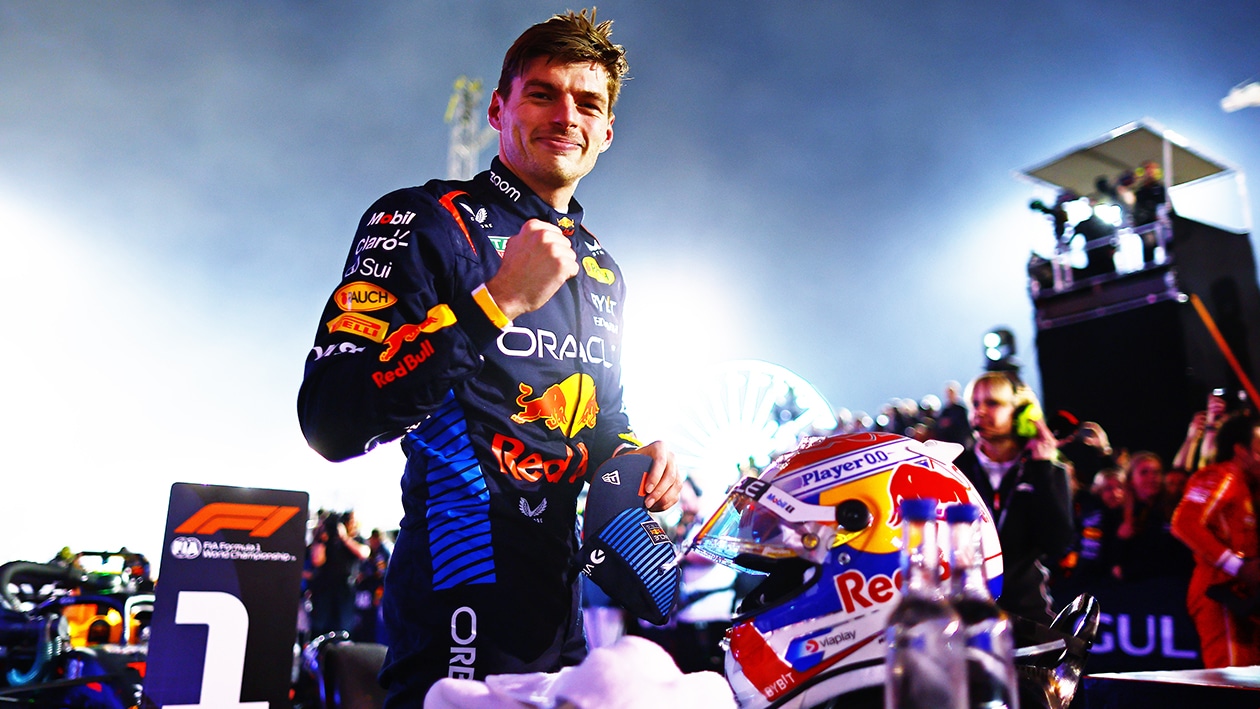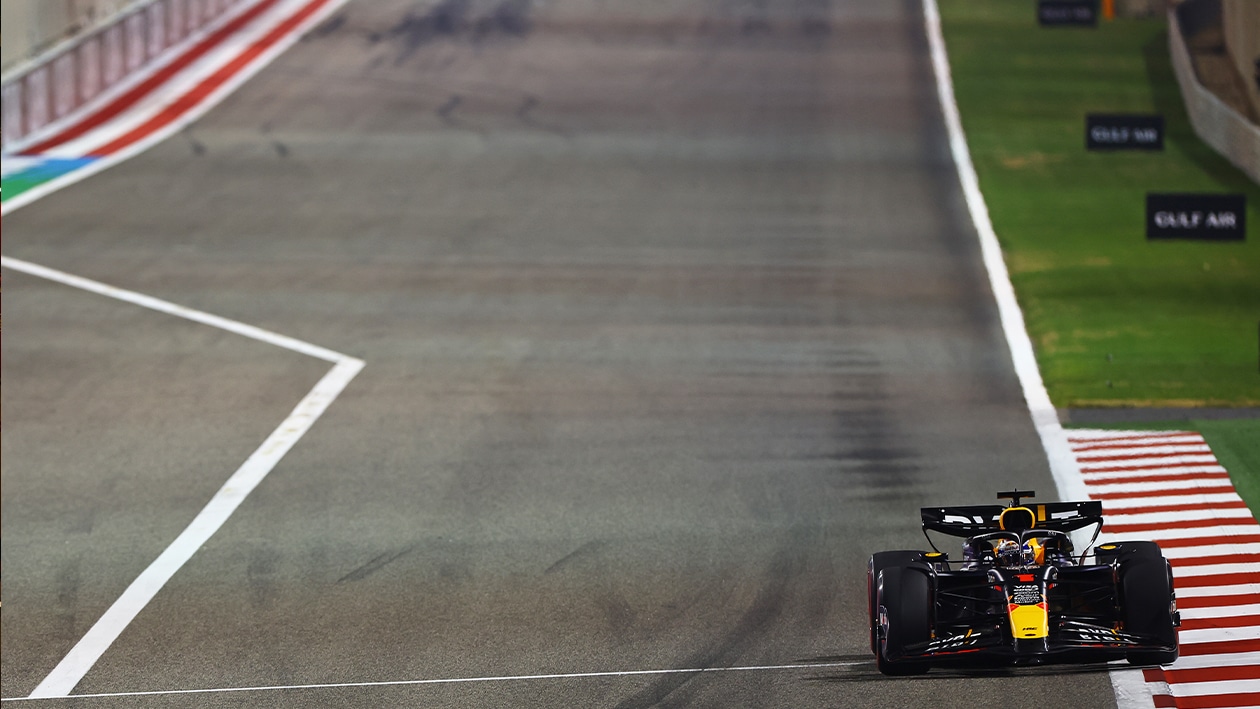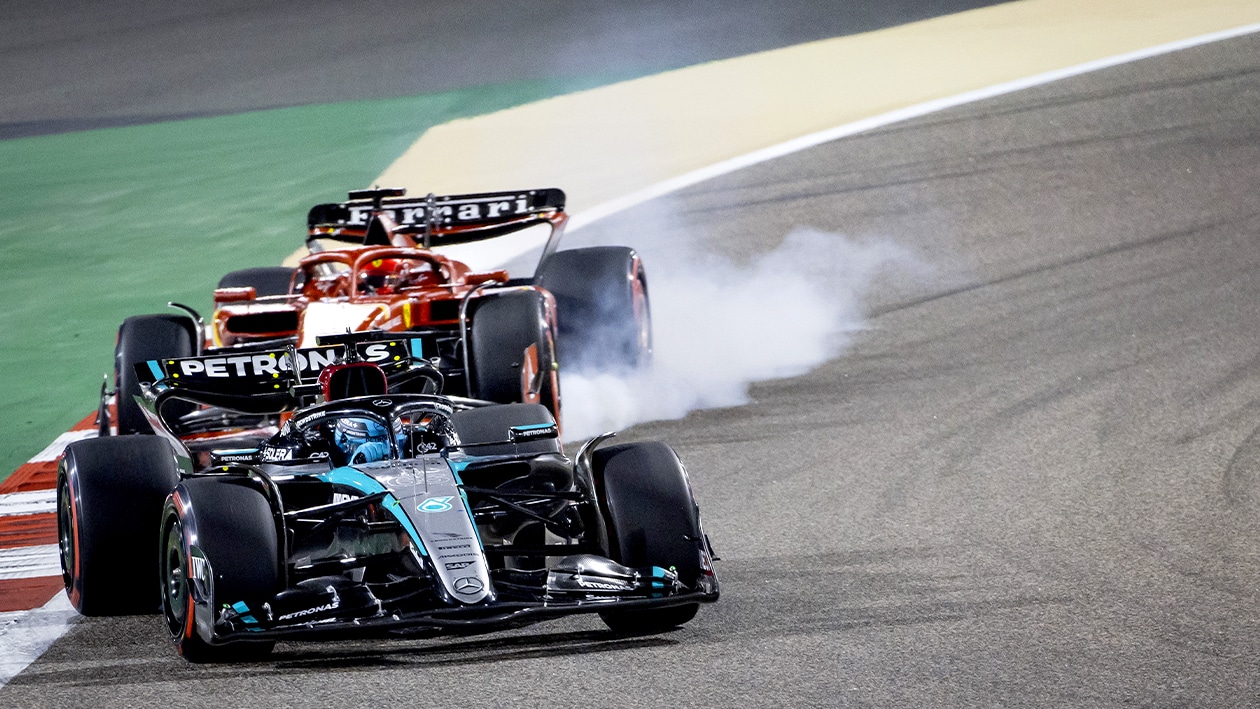2024 Bahrain GP numbers say Red Bull's advantage is smaller. Is it really?
2024 Bahrain GP analysis: Temperatures boiled over as Mercedes and Ferrari pursued Red Bull in vain, writes Mark Hughes But Verstappen's winning margin was smaller than last year. Should it give the chasing F1 pack hope?

Max Verstappen's margin of victory in Bahrain was smaller than 2023 — but still crushing
Mark Thompson/Getty Images via Red Bull
Career win number 55 for Max Verstappen to kick-off a new season which looks very much like the old one and the one before that. Red Bull’s svelte new RB20 carried a big advantage in the race and Verstappen was on a relative cruise from pole to chequer. His team-mate Sergio Perez came through from an early fourth place to pass the compromised cars of George Russell (the Mercs running with not enough PU cooling) and Charles Leclerc (the Ferraris running with not enough brake cooling).
Sainz was less seriously afflicted by the Ferrari brake problem than Leclerc and was able to pass both Russell and Leclerc (twice) and put pressure on Perez. But he was 25sec behind the imperious Verstappen at the flag.
What patterns did we see and what might they foretell of the season ahead?
Red Bull’s on-paper advantage is smaller
Last year Verstappen was on pole by 0.3sec and was 38sec ahead of the best non-Red Bull at the end. This year Charles Leclerc actually set a faster time than Verstappen’s pole (but did it in Q2) and the best non-Red Bull at the end was 25sec behind.

Throwback to 2023 as Max Verstappen leads entirely alone
Mark Thompson/Getty Images via Red Bull
The numbers say the advantage is smaller, but is it really? They could just be the confluence of circumstance, the way the gusty winds of qualifying hurt the Red Bull more than the others and/or how hard Verstappen decided to push in the race relative to a year ago.
We can see that the Ferrari’s tyre deg is way better than last year and Carlos Sainz was delighting in being able to attack rather than racing with one eye on his mirror. Without his braking problem (which was pulling the car hard right when he stood on the left pedal), Leclerc believes he could have held onto the second place he’d qualified in and made the gap behind Verstappen much smaller than it was. The Ferrari is a much-improved car. But then the RB20 is a better car than the RB19.
Where are Mercedes/McLaren/Aston Martin?
Mercedes, having surprised itself by how competitive it was in FP2 on Friday (when Lewis Hamilton was fastest) felt it had erred too much towards qualifying with its initial set up and on this track which is all about protecting the rear tyres in the race, they stepped back from that, Hamilton slightly more than Russell. To try to claw back the lap time lost from that more understeery balance, Mercedes opted to close up the bodywork cooling as far as possible. It had been untypically cool on Thursday and Friday and even though the Saturday forecast was for higher temperatures, the increase was greater than forecast and within a few laps both drivers were having to lift and cost to keep the PUs from overheating. It also had an effect on the battery. They were 0.4sec per lap slower than they would have been if they’d chosen a cooling package 0.04sec slower over one lap. Where would 0.4sec per lap faster have put it? About where Sainz was.

Brake-compromised Leclerc follows Russell’s overheating Mercedes
ANP via Getty Images
Russell had put a great early pass on the brake-compromised Leclerc to go second before being compromised himself and repassed by Leclerc and overtaken also by Perez and Sainz. He was only just clear of Lando Norris’s McLaren at the end. In between Norris and the sister McLaren of Oscar Piastri was Hamilton. Almost 20sec behind the Mercedes/McLaren struggle came the Aston Martins of Fernando Alonso and Lance Stroll, ninth and 10th. It was a pretty clear competitive order: Red Bull, Ferrari, Mercedes/McLaren, Aston, Sauber, Haas, RB, Williams and resolutely slowest of all – Alpine. Alex Albon was struggling with PU issues and so Williams is probably artificially low in that ranking. Haas’s Nico Hulkenberg did a brilliant lap to make Q3 but we still don’t know if such pace can be combined with competitive tyre deg as he was in the pits for a new nose at the end of the first lap, his race becoming necessarily complicated from there. The pack has closed up – the Alpines on the back row were 1.8% off the pole time. Being 1.8% adrift of pole last year would have put you 11th on the grid rather than 19th. But that’s not been enough to prevent tech director Matt Harman and aero chief Dirk de Beer from resigning.
The strengths of the McLaren are in fast corners so Bahrain was not a great track to show that. But it was very quick in the middle sector sweeps, and we look forward to seeing how it goes around Suzuka for round 4. Or even through the fast sweeps of Jeddah next week.
